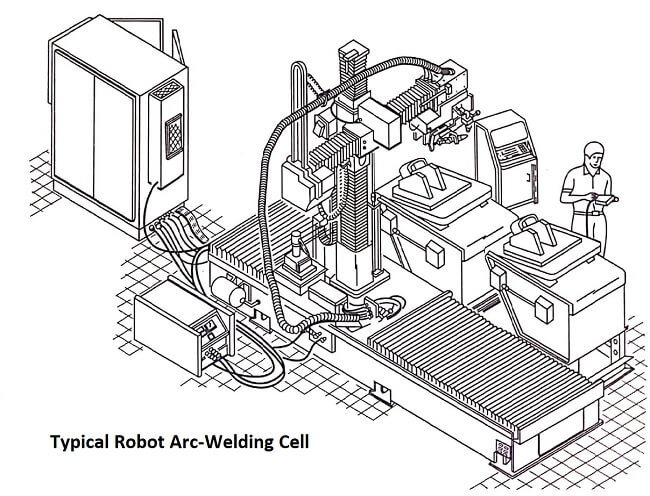Because of the technical and economic problems discussed above, the typical arc-welding application for a robot is one in which the quantities of production are medium or high.
In these cases, a robot cell can be justified which consists of a welding robot and a part holder or part manipulator.
The part holder is used to fixture the components and position them for welding.
A part manipulator provides an additional capability in the form of 1 or 2 degrees of freedom to position and orient the components relative to the robot.
The robot is equipped with a welding rod or wire-feed system, and the required power source to provide the electric current for the operation.
The workcell controller is used to coordinate the robot motion, the welding current, the wire feed, the part manipulator, and – any other activities in the cell.
One possible organization of a robot welding cell is illustrated in fig.

A human operator is typically used to load and unload the part fixtures. Two part fixtures are often used in the cell as shown in the figure.
In this way, the robot can perform its welding cycle while the operator is unloading the previously welded assembly and loading the components into the holder for the next cycle.
This arrangement permits higher utilization of the robot and greater productivity of the cell.
| Read More Topics |
| Four types of robot control |
| Uses of sensors in robotics |
| Robot cell layouts |
| Machine loading and unloading |





